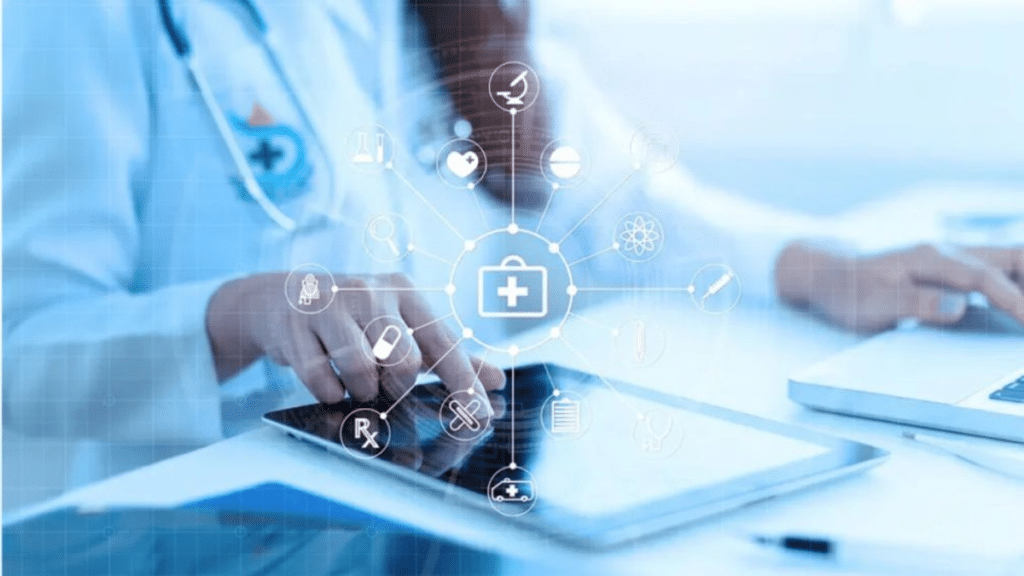Healthcare delivery is undergoing a remarkable transformation, powered by a wave of digital tools and intelligent technologies. While high-profile advancements like robotic-assisted surgery and AI-powered diagnostics often capture attention, a quieter revolution is streamlining administrative workflows and improving patient experience behind the scenes — from instant insurance checks to automated claims processing and virtual care solutions.
Let’s explore the core technologies that are redefining how care is accessed, delivered, and managed.
1. Digital Health Records (EHRs)
Digital health records have become the digital backbone of contemporary healthcare practices. Replacing traditional paper charts, Electronic Health Records consolidate essential patient information — lab tests, diagnoses, prescriptions, medical histories — into a single, accessible platform.
This digital transformation enables faster information sharing between departments, enhances clinical coordination, and helps avoid redundant tests or conflicting treatments. Over time, EHRs also provide vital longitudinal data, allowing clinicians to spot trends and make informed decisions for ongoing care.
2. Instant Insurance Verification
Real time insurance eligibility verification used to involve tedious phone calls or navigating payer portals. Today’s advanced verification systems enable real-time access to insurance data as soon as a patient checks in.
These systems instantly confirm active coverage, co-pay amounts, and plan details, allowing facilities to make informed admission decisions quickly — especially crucial in urgent scenarios. By catching outdated or incorrect insurance information before claims are submitted, providers can reduce denials and speed up reimbursement.
3. Remote Care and Telehealth Solutions
Virtual consultations have become an integral part of healthcare delivery since the pandemic, and the trend is here to stay. Telemedicine platforms allow patients to consult with doctors from home, improving access to care, reducing travel burdens, and supporting continuity for patients in remote or underserved areas.
4. AI-Powered Diagnostic Tools
Artificial intelligence is proving to be a game-changer in diagnostics. Advanced algorithms can assess complex medical imagery or datasets with incredible speed and accuracy. In fields like radiology and pathology, AI is being used to flag early signs of disease, often before they’re visible to the human eye.
Beyond imaging, predictive AI models are used to assess patient risk, recommend treatments, and support personalised care plans. As these systems learn from expanding datasets, their accuracy and utility continue to grow.
5. Health Monitoring Through Wearables
Wearable health trackers — once seen as simple step counters — now offer comprehensive monitoring of heart rhythms, oxygen levels, sleep cycles, and more. These insights empower patients to take charge of their wellness while also supplying clinicians with data for early intervention.
In the near future, wearable technology could be pivotal in flagging early symptoms of illness before a patient even seeks help.
6. Automated Revenue Cycle Solutions
Medical billing is a complex, error-prone process. New revenue cycle technologies are automating everything from claim submission to denial management. When integrated with real-time insurance checks, billing systems can instantly flag issues like missing data before submission.
This end-to-end automation reduces delays, improves cash flow, and alleviates administrative strain on staff — allowing them to focus more on patient-facing activities.
7. Digital Intake and Registration
Manual paperwork is steadily being replaced by digital onboarding systems. Patients can now complete forms, upload ID, and provide insurance details from their devices before their visit.
This approach reduces waiting times, minimises data entry errors, and enhances the patient experience by making the process smoother and more transparent.
8. Interconnected Healthcare Systems
Effective care often depends on seamless information exchange. Interoperability tools bridge the gap between hospitals, specialists, pharmacies, labs, and insurers, enabling smooth data flow.
Through secure health information exchanges (HIEs), clinicians can gain immediate access to relevant patient records, even if those records originated from another provider or health system.
9. Intelligent Scheduling Systems
Modern appointment systems go far beyond static calendars. AI-driven scheduling software dynamically adjusts based on real-time provider availability, patient history, and anticipated capacity.
This results in fewer no-shows, better staff utilisation, and improved patient access. These tools can even anticipate surges based on trends or seasonal demand.
10. Predictive Insights for Population Health
Beyond individual patient care, healthcare analytics is now being applied at scale to manage population health. Predictive models analyse a mix of clinical, demographic, and social data to identify at-risk populations.
By recognising early signs of readmission risk or gaps in chronic condition management, care teams can proactively deploy outreach programs or follow-up care — improving outcomes while reducing overall system burden.
A Smarter, More Patient-Focused Healthcare System
The future of healthcare is built on smart, connected systems that remove friction, improve accuracy, and bring care closer to the patient. These innovations are not just about technological progress — they are about building a more efficient, responsive, and humane healthcare experience for everyone involved.
In this new era, success will depend on how well organisations integrate these tools into their day-to-day operations to empower both care providers and the communities they serve.


